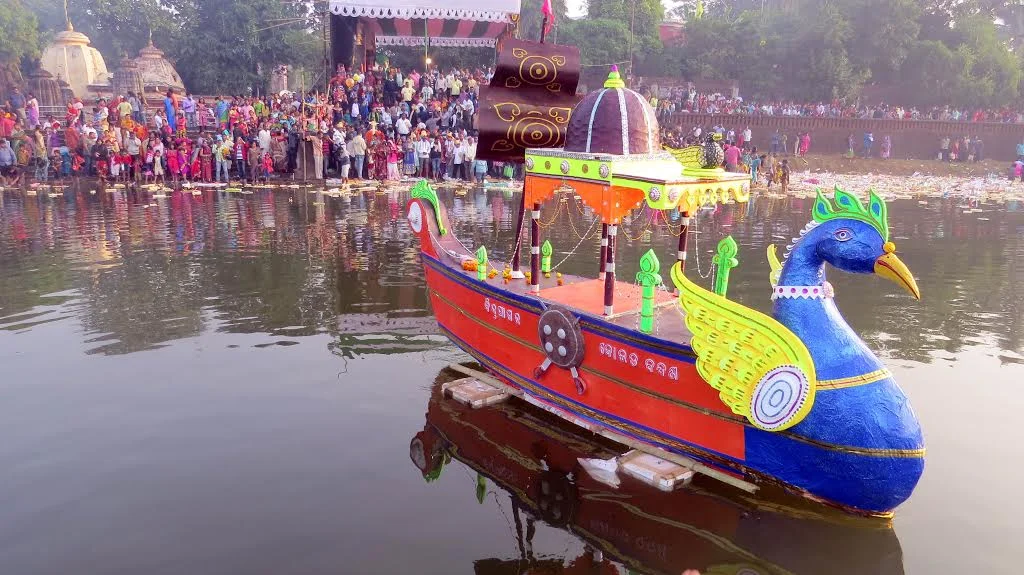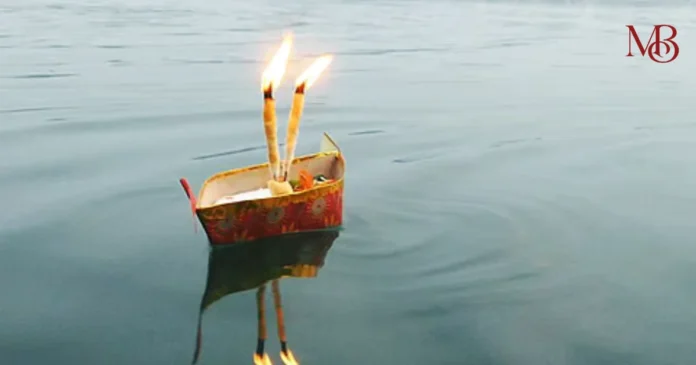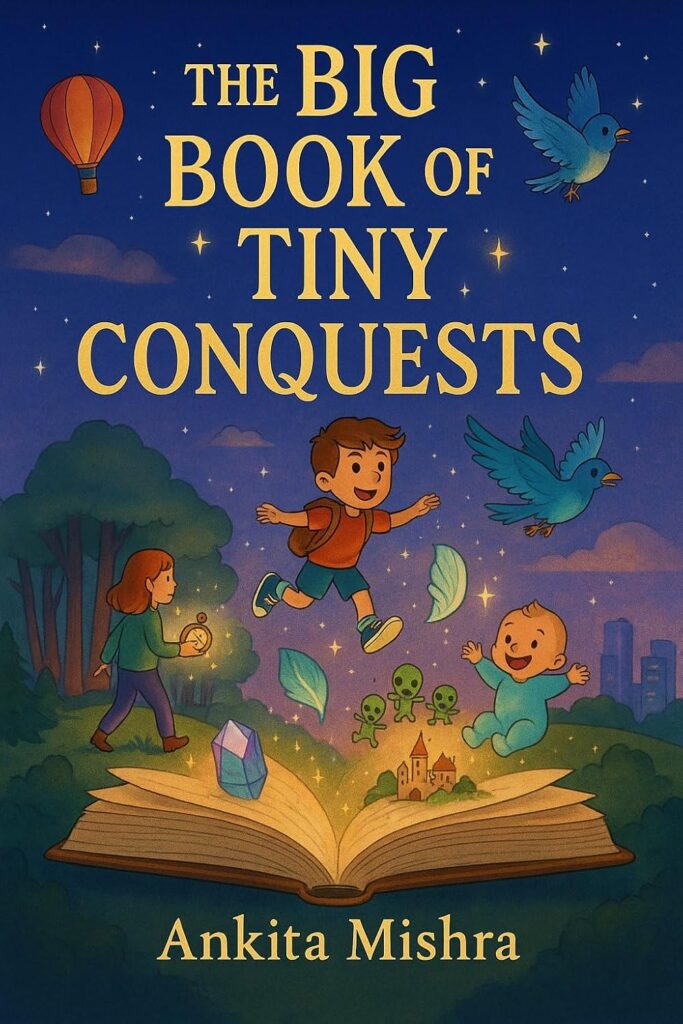Kartika Purnami in Odisha is a festival steeped in history, spirituality, tradition, and vibrant ritual practices. Celebrated annually on the full moon day of the Kartika month, this occasion marks a confluence of maritime glory, religious devotion, and communal festivity unique to Odisha’s cultural landscape. Below, you will find an expansive exploration into the history, traditions, rituals, and significance of Kartika Purnami in Odisha, followed by frequently asked questions for quick reference.

History of Kartika Purnami in Odisha
Kartika Purnami has roots extending over two thousand years and is intrinsically linked with Odisha’s ancient maritime prowess. Historically, the festival commemorates the time when traders, known as ‘Sadhabas’, sailed out from the coast of Kalinga to distant Southeast Asian islands like Java, Sumatra, and Bali, marking the beginning of vital trade and cultural exchange routes. These maritime journeys typically commenced on the day of Kartika Purnami as the monsoon would have retreated and the Bay of Bengal was most navigable.
Odisha’s rich network of rivers and proximity to the sea fostered the rise of bustling ports such as Palur, Pitbunda, Tamralipti, Manikapatna, and Chelitalo. These were gateways for ships laden with goods ranging from textiles to spices and precious stones. Ancient literature and local lore refer to this era as the pinnacle of Odisha’s seafaring tradition, with the king of Kalinga being titled ‘Mahodadhipati’ or ‘Lord of the Oceans’. The once-thriving ports later declined, but the pride and memory of Odisha’s maritime legacy remain alive through Kartika Purnami celebrations.
Traditions of Kartika Purnami
One of Odisha’s most distinctive traditions on Kartika Purnami is Boita Bandana, the boat festival. Early in the morning, devotees throng rivers, ponds, and water bodies to set afloat small boats crafted from banana stems, coconut sticks, or papers adorned with lighted lamps, flowers, coins, betel leaves, and milk. This ritual pays homage to the centuries-old expeditions of Odia traders and evokes pride for ancestors’ courage and ingenuity.
Chanting of “Aa Ka Ma Boi…” representing three Odia months, Ashwina, Kartika, and Margashira is a poetic remembrance of this maritime tradition. The atmosphere is festive, interspersed with fairs along riverbanks like Cuttack’s Mahanadi, and performances that retell the tales of the Sadhabas. In urban areas, modern boats made from thermocol or paper are used but the emotional connection to tradition runs deep.
Another core tradition is the culmination of Panchuka, a sacred five-day observance during the last phase of Kartika month. Devotees, especially women, abstain from non-vegetarian food and practice satvik living, spending the days in fasting, prayers, and ritual purity. Panchuka concludes on Kartika Purnami with rituals like Tulasi worship, holy river dips, lighting earthen lamps, and decorating homes with ‘alpana’, flowers, and diyas.
Rituals and Religious Practices
Devotees begin their Kartika Purnami celebrations before dawn with a ritual bath in sacred water bodies (Kartika snana), believed to purify the soul and grant spiritual merit. In temples and homes, offerings called Annakuta, heaps of food presented to deities, are made. The worship of Lord Shiva and Vishnu is central, and special prayers and hymns fill the air.
One of the most beautiful rituals involves lighting lamps in significant numbers (5, 7, 11, 21, 51, or 101) and placing them inside homes, under sacred trees like Tulasi, fig, and amla, and even floating them on boats in water. These lamps, called ‘Deeparatna’, symbolise guidance, divine presence, and hope for salvation for all living beings.
Charity is also emphasised: people donate food, clothing, sesame seeds, rice, and even gold to fulfill spiritual wishes and support the needy. Households decorate the Tulasi Chaura an altar to Goddess Lakshmi with lamps and flowers while reciting Vedic chants and hymns.
At Puri’s Jagannath Temple, the sibling deities Lord Jagannath, Goddess Subhadra, and Lord Balabhadra are adorned in their golden ‘Raja Rajeswari Bhesa’, drawing lakhs of devotees for darshan and prayers. The temple remains open throughout the night to accommodate worshipers from across the state.

Significance of Kartika Purnami
Kartika Purnami holds multifaceted significance in Odisha. Culturally, it is a commemoration of the maritime valor of Odia ancestors, echoing the spirit of adventure, entrepreneurship, and global cultural exchange. The symbolism of floating boats letting go and moving forward mirrors philosophical teachings about love, farewells, and gratitude.
Spiritually, Kartika Purnami is celebrated as the birthday of Lord Kartikeya, the warrior son of Shiva and Parvati, revered for courage and purity. For those observing the month-long Habisha and Panchuka, it marks the end of an austerity period, a return to normalcy, and a renewal of spiritual blessings.
On a broader Hindu canvas, Kartika Purnami is one of the most auspicious days for river baths and offering prayers, drawing devotees for ritual purification and fulfillment of sacred vows. The festival unites local beliefs with pan-Indian traditions, bridging geographical and spiritual worlds.
Also Read: Dramatic Saga of Kumar Purnima
The celebration is also a reminder of nature’s cycles, the retreat of the monsoon, the fullness of crops, and the transition between seasons. Lighting lamps, floating boats, and performing rituals echo humanity’s timeless longing for light, blessings, peace, and prosperity.
Kartika Purnami thus stands as a luminous chapter in the cultural narrative of Odisha, a day when history, faith, ritual, and communal identity converge to celebrate both the past and the present. From rivers glowing with lamps to songs echoing seafaring tales, this festival remains one of Odisha’s most cherished and symbolic occasions.
FAQs
Q1. What is the historical importance of Kartika Purnami in Odisha?
Kartika Purnami marks the era when Odia traders, called Sadhabas, set sail for Southeast Asian countries, symbolizing Odisha’s maritime glory and its pivotal role in ancient trade.
Q2. What is Boita Bandana and how is it performed?
Boita Bandana is a ritual where people float miniature boats on water bodies at dawn, made from banana stems, coconut sticks, or paper, decorated with lamps, flowers, coins, and betel leaves, to commemorate ancient seafarers.
Q3. What are the main rituals observed on Kartika Purnami?
Major rituals include holy river baths (Kartika snana), lighting numerous lamps, Tulasi Puja, offering Annakuta, donating food and clothes, and worshipping Lord Shiva and Vishnu in homes and temples.
Q4. Why is Kartika Purnami significant for devotees?
The festival brings spiritual purity and renewal, marks the end of the Panchuka austerity, honours the divine, and connects present-day Odias with their rich past. It is also believed to bring prosperity and well-being.
Q5. How does Kartika Purnami influence Odisha’s culture today?
Kartika Purnami continues to inspire pride in Odisha’s maritime roots, unite communities in festive joy, and preserve ancient traditions through vibrant rituals and collective memory.



